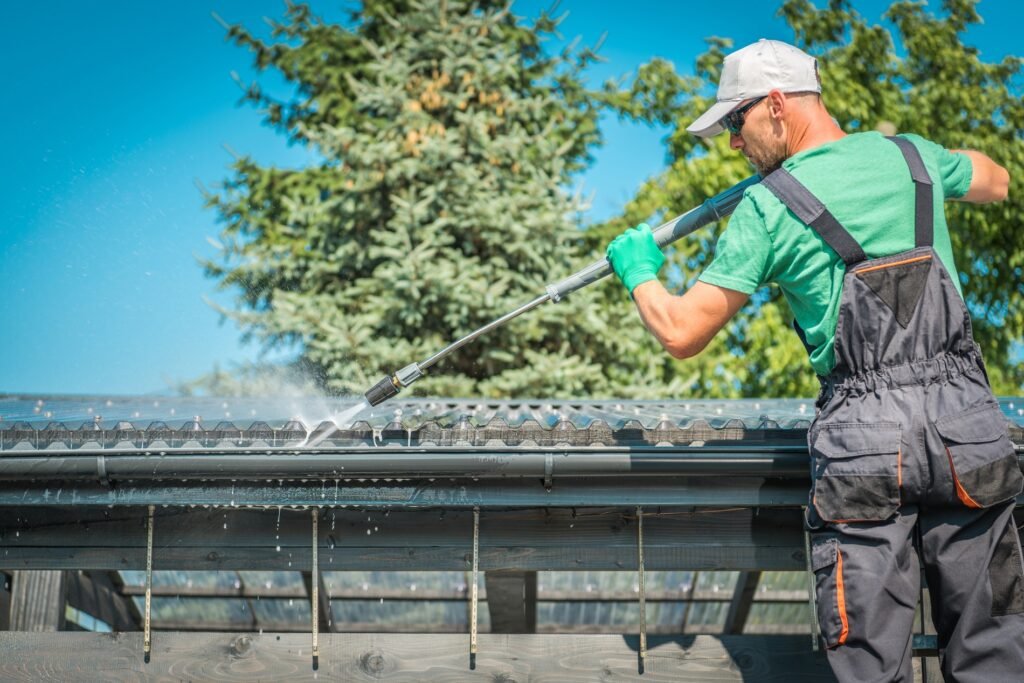A moss-covered roof may seem like a quaint and natural touch, but it can create significant issues if left unchecked. Roof moss detracts from a home’s curb appeal and compromises its structural integrity. To preserve your roof’s longevity and health, understanding the complexities of moss removal is essential. Here, we discuss eight facts homeowners should know about safe and effective moss removal.
Moss Loves Moisture
Moss thrives in shaded, damp environments. If your home’s roof doesn’t get much light or is exposed to humidity, it becomes a breeding ground for moss. Understanding these conditions is the most important step in devising a roof moss removal and prevention strategy.
It Damages Roofing Materials
While moss seems harmless, its growth causes severe roof damage. Moss attaches itself to tiles, shingles, and other surfaces, lifting them and creating gaps through which moisture enters. If left untreated, moisture will penetrate the roof decking, leading to decay and rot. Regular moss removal prevents these issues and preserves your roof’s integrity.

Gentle Cleaning Methods Are Preferred
Where moss removal is concerned, gentle cleaning methods will achieve great results while minimizing roof damage. Pressure washing, for instance, may dislodge granules from shingles and cause premature deterioration. Instead, use low-pressure washing and soft brushing to remove moss without causing undue damage.
Prevention Matters
The easiest way to handle roof moss is to keep it from growing. Consider installing copper or zinc strips along the roof’s ridges. With time, these metals release ions that inhibit algae and moss growth. While they don’t offer an immediate solution, roof strips are a preventive measure that substantially reduces the risk of roof moss growth.
Eco-Friendly Solutions Are Recommended
If you’re worried about your carbon footprint, there are sustainable ways to remove roof moss. A mixture of mild detergent or white vinegar and water will break down moss without putting harmful chemicals into the earth. Additionally, sodium percarbonate—or oxygen bleach—is a safe, biodegradable moss eliminator that protects your roof and the planet.
Regular Inspections Are Crucial
Regular roof inspections help homeowners detect the earliest signs of moss growth. By catching these problems early, owners can address them before damage occurs. Conduct roof inspections twice per year, especially after storm season, to find areas where moss may grow. Early action helps owners avoid expensive repairs and preserve the long-term health of their roofs.
Some Cases Require Professional Intervention
While there are a few DIY moss removal solutions, certain cases may require professional help. If your home’s roof has a steep pitch, it may be best to leave the job to an expert. Roof cleaning specialists have the equipment and tools to remove roof moss while minimizing damage.
Roof Care Do’s and Don’ts
When removing roof moss, follow a few basic tips to ensure your safety. Use a low-pressure washer or a soft brush to apply the cleaning solution and wear safety gear like non-skip shoes. Don’t use a pressure washer or harsh chemicals on the roof.
Eliminating Roof Moss
Roof moss elimination is a critical aspect of home care that shouldn’t be ignored. Understanding contributing factors, assessing potential damage, and finding the right prevention and removal method is essential for preserving the appearance and integrity of your roof. Whether you use DIY methods or get professional help, regular moss removal will keep your roof looking great for years to come.
